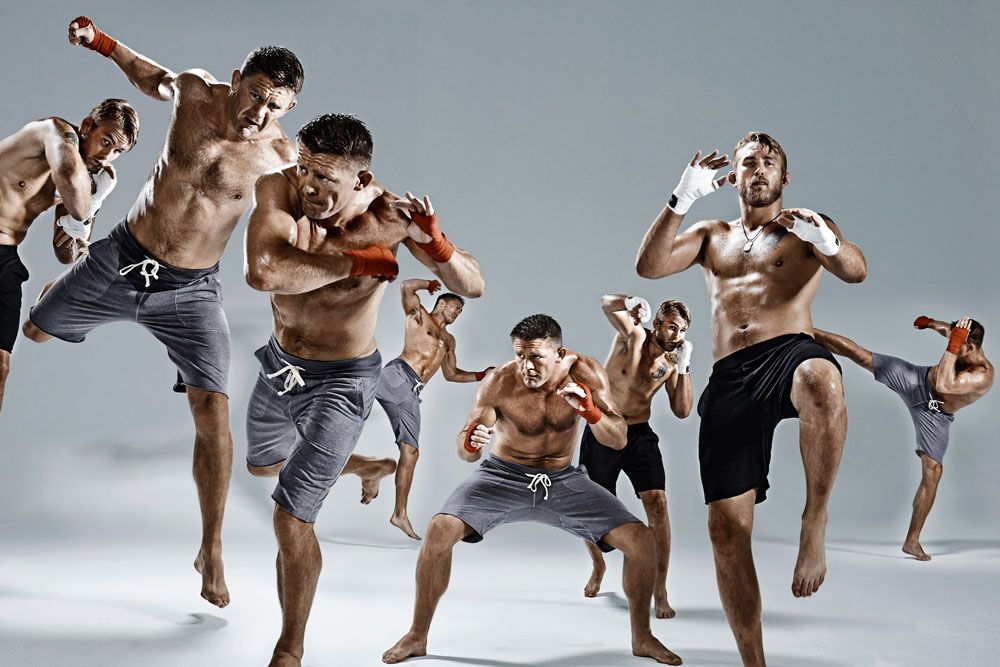
MMA is a full-contact combat sport, sometimes known as cage fighting. It incorporates combat sports and martial arts, including boxing, judo, and Taekwondo.
The octagon is a caged eight-sided ring. Athletes must be physically fit and quick on their feet to succeed in MMA.
Hottest mma fighters go through intense training to gain muscle and agility. Using their entire body in one move or strike without losing their balance.
Resistance and weight training can help improve these athletic abilities. Fighters may develop their shoulders and triceps, biceps, and triceps to improve power, speed, and accuracy.
Strong muscles mean warriors must carry more. This may cause a delay. Cardio keeps lean muscle. MMA fighters need strong hearts and lungs.
This weight training plan is suitable for all MMA players. These exercises need gym equipment. Some can be done with dumbbells and a weighted bench bell at home. Consider MMA sparring.
Beginners should learn the basics of weight training. These tips might help you gain strength or build a foundation for future MMA fights.
Warm-up before you start weight training.
Do not train for serious injuries -acute and chronic.
If you are recovering from a weight-training accident, don’t give up your octagon sessions for a weight session.
Ask your coach or personal trainer if they have any suggestions for personalizing the training program to suit your needs and goals.
To recover from competition, you should take a few weeks off of training.
Strength Conditioning Fundamentals
This Octagon training regimen focuses on strength and muscular conditioning. This phase is best suited for seasonal training.
Seasonal training is useless. Less is more as you increase strength and endurance. The length of each phase varies depending on fitness.
If you’re not fighting in MMA this season and don’t have access to a gym, you may build up a home gym and practice kickboxing and shadowboxing. Weight exercise in the Octagon after work or on a particular day is preferable.
Begin with a single compound movement that targets your hamstrings and glutes, core, and upper back.
Frequency 2-3 sessions per week, 8-10 weeks
Type: General conditioning
Warmup – 10 minutes of aerobic exercise (walking, jogging, outside, stationary biking, or using an elliptical or cross-training machine like an elliptical).
Weight Training:3 sets 10-12: Romanian Deadlifts (RDLs).
Rest between sets: 30-90 seconds
Cooldown5 minutes of light walking or jogging followed by stretching
Building Power And Endurance
Once you have built a solid foundation of strength, the next phase focuses on building more muscle and power.
Frequency 2-3 sessions per week, for 4-6 weeks
Type: Strength, and power
Warmup 15 minutes of vigorous aerobic exercise
Weight training: 5 sets of 6: RDLs and incline dumbbell presses. Hang cleans, pullups and barbell back squats.
Abdominal exercise: 3 sets 10-12. Bicycle crunches
Rest between sets3-5 minutes for weights; 1-2 minutes for crunches
Cooldown 10 minutes of light jogging/walking followed by stretching
Weight Training Maintenance
The maintenance of strength and power is the goal of the final and third phases of the training seasons.
Weight training should be used during competition, regardless of whether you are competing.
Frequency: 1-2 sessions per week
Type: Power, with lighter loads and quicker execution than previous phases
Warmup 20 minutes of vigorous aerobic exercise
Weight Training:3 sets with 10 using rapid concentric movements at 40-60% max resistance (quicker movements with less resistance): 1 squat. 2 hang clean.
Abdominal Workout: 3 sets 10-12: Bicycle crunches
Rest between sets: 1-2 minutes
Cooldown Light jogging/walking for 15 minutes, followed by stretching
